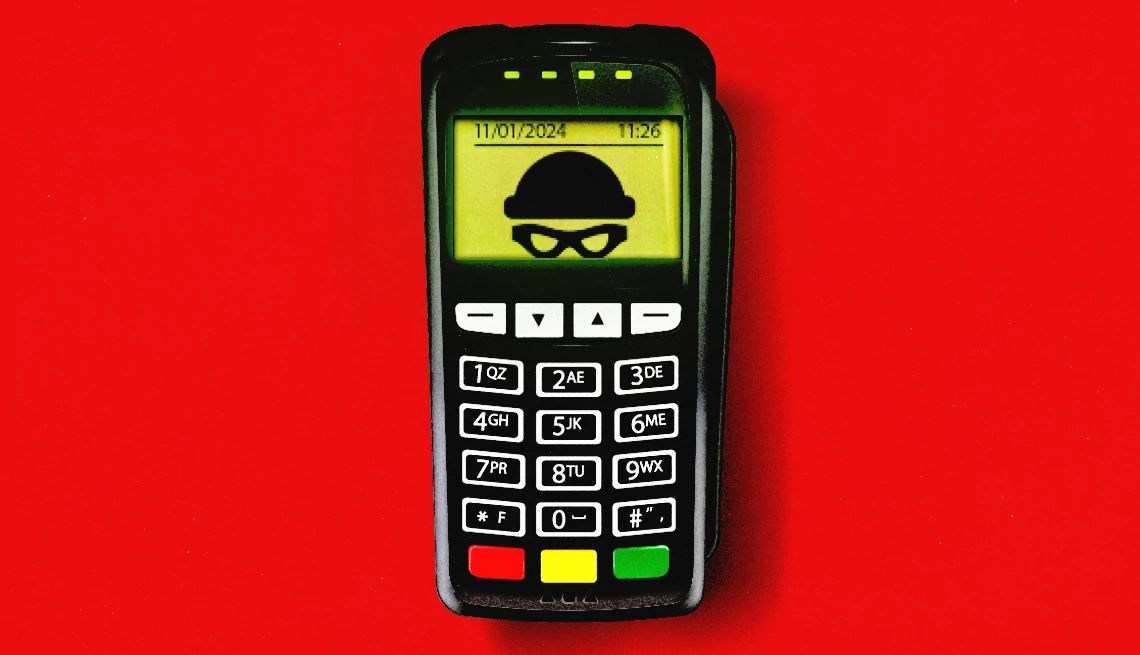AARP Hearing Center


Before police ended his crime spree, Christos Mavrokelos stole some serious cash. Mavrokelos installed skimmers — devices placed in credit and debit card readers that capture data from the card’s magnetic strip — on ATM machines throughout California. Over a two-year period, Mavrokelos stole roughly $149,000 from at least 40 accounts, according to the U.S. Attorney’s Office for the Eastern District of California. In July 2024, he was sentenced to 18 months in prison and ordered to pay $75,000 in restitution.
Skimming scammers like Mavrokelos are keeping law enforcement busy, and showing no signs of slowing down. In September 2024 alone, skimmers were found on checkout card readers around the country, including at three grocery stores in Columbus, Ohio; on multiple registers at an Ocean Mart grocery store in Roy, Utah; and at four Wawa locations in Delaware.And the economic damage is jaw-dropping: Skimming costs financial institutions and consumers more than $1 billion annually, according to the FBI.
How card skimmers work
With fuel pumps (a frequent target), the skimmers are often attached to the machine’s internal wiring, which makes them hard to detect. In other cases — as with ATMs or point-of-sale card readers — criminals attach the skimmers over the card slot.
Criminals sometimes take additional steps on ATM machines to steal your PIN. Some place tiny cameras on or near the machine to record you while you enter your number. Another tactic is to put an alternative keypad over the real one to capture your keystrokes.
The scams may seem James Bond-level sophisticated, but they’re actually quite simple, experts say.
“Skimming scams are sophisticated only in the sense that they require hardware and tampering,” says Petros Efstathopoulos, vice president of research for the RSA Conference, an annual cybersecurity event. “[The criminals] have to attach the malicious hardware to the devices in a stealthy manner. But it’s fairly easy to capture the card information from the magnetic stripe and use it online or even replicate the card.”































.jpg?crop=true&anchor=13,195&q=80&color=ffffffff&u=lywnjt&w=2008&h=1154)































More From AARP
Chip Card Scam Turns Security Feature Into Security Risk
Your bank will never ask to ‘secure your account’ by taking the protective chip on your bank cardHow to Keep a Loved One With Cognitive Decline Safe From Scams
Key steps to protect vulnerable family members’ finances in an age of rampant fraudAARP’s Fraud Fighters See the True Cost of Scams Every Day
Volunteers at the AARP Fraud Watch Network Helpline are devoted to supporting and assisting victims